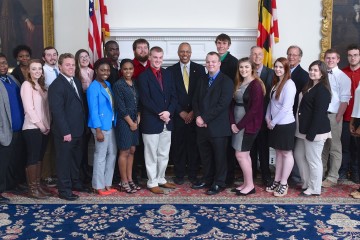Quantum Experiment Calls Into Question Objective Reality
For most people, when something is a fact, that means it is real and holds true. It can be proven. And when we call something a fact, we typically consider the opposite to be untrue. However, this is often not necessarily the case in quantum physics, a new experiment suggests. But before we can get to the experiment, there are some light quantum mechanics to cover.
The world of atoms and the particles of which they are comprised is different than that of the large-scale world that we live in. For us, when something happens, it happens regardless of who is watching. However, in quantum mechanics, observers have an impact on particles, wherein the particles can exist in superposition until they are observed, at which point their position becomes definite. This is called quantum entanglement.
Quantum superposition is the main principle of quantum mechanics that states if a physical system may be in one of multiple states, it is considered to be partly in all the states, such as in the electron cloud model of an atom. Some of you may be familiar with superposition in the context of Schrodinger’s Cat thought experiment, intended to display the principle, as applied to everyday objects.
In Schrodinger’s experiment, there is a cat in a box. Also inside the box is a flask of hydrocyanic acid that is set up to a timer that is equally likely to either go off or not go off within the next hour. When the timer goes off, the poison will be released and the cat will die. Sealed in the box for that hour, the cat can be considered both alive and dead since we have no way of seeing into the box. This is superposition. If, though, you open the box, you make the cat’s state definite. It is either alive or dead. You cannot open it and view it in two states, as you know.
This experiment was intended by Schrodinger to be a criticism of the Copenhagen interpretation of quantum mechanics. He wanted to show how ridiculous it was to think that the cat was in two states. He thought it was obviously in one, and said there is a difference between a fuzzy, poorly taken photo and a photo of fog, meaning just because we don’t know the definite state doesn’t mean it’s in two states. However, those that believe in the Many-worlds interpretation use it as an actual demonstration of quantum mechanics.
In 1961, physicist Eugene Wigner proposed a new thought experiment in which an observer watches someone flip a coin. In this experiment, there is someone flipping a coin, inside a room sealed to another observer. The person flipping the coin inside the room is an observer of the coin, which is equally likely to land on heads or tails. When the person flips the coin, it is considered to be in a superposition of heads and tails, but when it lands, the observer will have a definite answer. It will either be heads or tails. But for the person outside the room, the observer of this closed system, they would consider the coin to still be in superposition.
This presents a conundrum when it comes to things that actually work this way. Obviously, a coin can be flipped by my friend in the other room and land on heads, and my lack of knowledge doesn’t make it not so. But again, particles and atoms work differently than things we can see with our naked eye. For years this paradox has interested scientists, which brings us to the experiment.
An experimental test, proposed by Dr. Caslav Brukner, was performed at Heriot-Watt University in Edinburgh. The experiment was done on a small-scale quantum computer made of three pairs of entangled photons. It took weeks to get enough data using just the six photons. But eventually, they collected evidence suggesting quantum mechanics might be incompatible with the assumption of objective facts.
However, this theory runs on a few assumptions, including the assumption that the measurement outcomes aren’t being affected by signals traveling faster than light, which is not definite. Also, it assumes that photons can be considered observers. Brukner says the observer doesn’t need to be conscious, just able to establish facts by measuring it. There is also no reason for us to assume that a detector or conscious observer should be considered a quantum object the way a photon is.
This experiment suggests that we might need to reconsider our concept of objectivity. The facts that we experience in our macroscopic world are sure to remain safe and certainly unharmed in our day-to-day lives. The results certainly blur our perception of reality a little bit and lead us to question what role our conscious observation as intelligent beings has to do with the physicality of our world.


